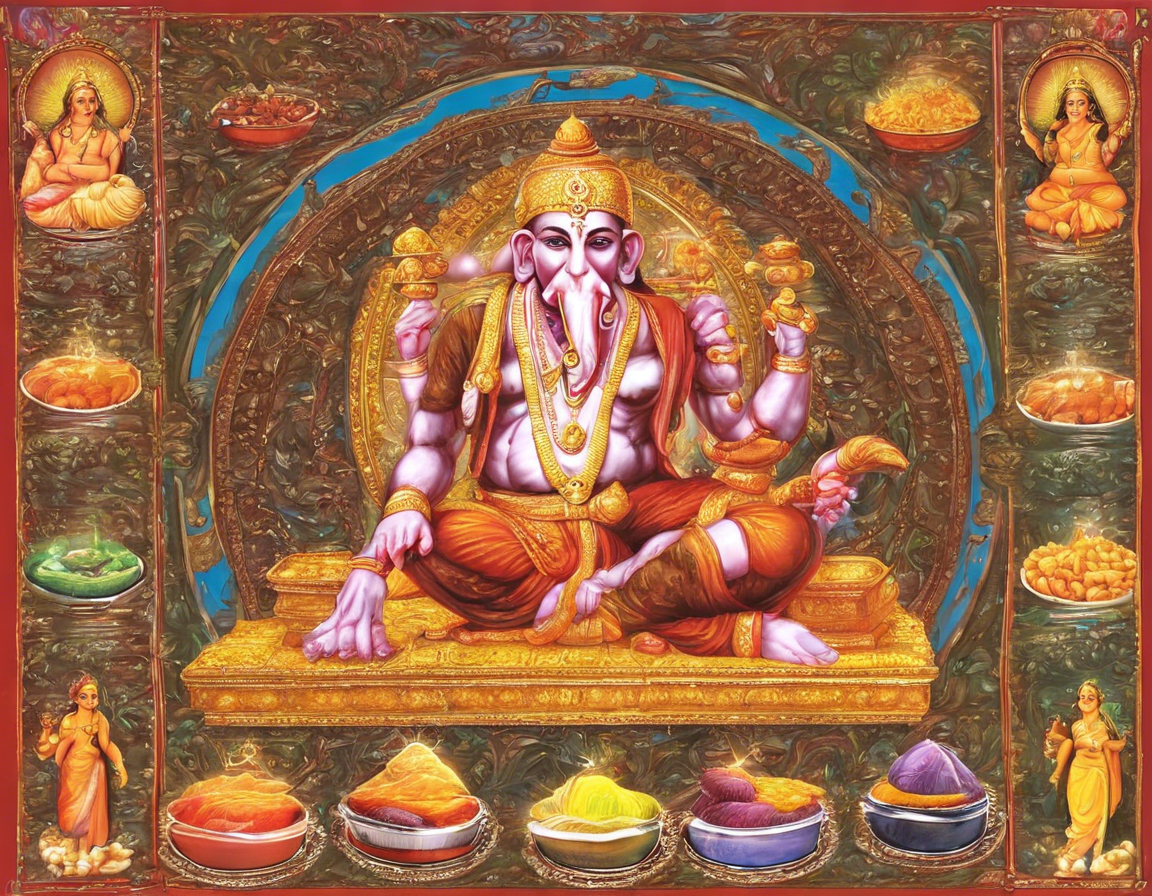In the realm of spiritual growth and self-awareness, the journey from Sambhog to Samadhi is a profound and transformative one. Rooted in ancient Eastern philosophies and practices, this path is characterized by a progression from the mundane and material towards the divine and transcendent. Sambhog, derived from the Sanskrit word meaning “enjoyment” or “experience”, represents the sensory experiences and worldly pleasures that form our everyday existence. On the other hand, Samadhi refers to a state of profound meditative absorption, where the individual experiences a sense of unity and oneness with the universe.
The Evolution of Consciousness
Sambhog and Samadhi can be viewed as two ends of a spectrum representing the evolution of consciousness. In the early stages of spiritual seeking, individuals are typically drawn towards sensory pleasures and external gratifications as they navigate the material world in search of happiness and fulfillment. This phase is often characterized by desire, attachment, and ego identification, where the individual’s sense of self is closely tied to external circumstances and possessions.
As one progresses along the spiritual path, there is a gradual shift in consciousness towards inner exploration, self-discovery, and transcendence. The practice of mindfulness, meditation, and self-inquiry becomes instrumental in cultivating a deeper awareness of the self and the interconnectedness of all beings. This inner journey leads to the awakening of higher states of consciousness and the realization of one’s true nature beyond the limitations of the ego.
The Role of Meditation
Meditation plays a central role in the transition from Sambhog to Samadhi. By training the mind to focus and quieting the incessant chatter of thoughts, meditation allows individuals to transcend the limitations of the ego and connect with the higher aspects of consciousness. Through regular practice, meditators can access deeper states of awareness, experience inner peace, and expand their perception of reality.
Different meditation techniques, such as mindfulness meditation, loving-kindness meditation, and transcendental meditation, offer practitioners unique pathways to explore the inner realms of consciousness and attain states of Samadhi. By cultivating present-moment awareness, cultivating compassion, and transcending the dualities of the mind, individuals can gradually loosen the grip of Sambhog and shift towards the blissful state of Samadhi.
Letting Go of Attachments
A fundamental aspect of transitioning from Sambhog to Samadhi is the practice of letting go. Attachments to material possessions, relationships, and identities bind individuals to the cycle of suffering and illusion, preventing them from experiencing true freedom and liberation. By releasing attachments and desires, individuals create space for inner growth, self-realization, and spiritual awakening.
Letting go is not about renouncing the world or denying oneself of pleasure; rather, it is about developing a detached and non-attached relationship with worldly experiences. This shift in perception allows individuals to engage with life fully while maintaining a sense of equanimity and transcendence. By freeing oneself from the shackles of attachment, one can pave the way for the effortless flow towards Samadhi.
The Role of Self-Inquiry
Self-inquiry, also known as self-reflection or self-examination, is another potent tool for navigating the path from Sambhog to Samadhi. By questioning and investigating the nature of the self, individuals can unravel the layers of ego and conditioning that obscure their true essence. Through introspective practices such as journaling, contemplation, and dialogue, individuals can gain insight into their beliefs, fears, and desires, and cultivate a deeper understanding of their true nature.
Self-inquiry often involves probing questions such as “Who am I?”, “What do I truly desire?”, and “What is the nature of reality?”. By delving into these inquiries with curiosity and openness, individuals can dismantle self-imposed limitations and false identifications, and awaken to the boundless potential of their true self. Self-inquiry serves as a catalyst for self-transformation and spiritual evolution, guiding individuals towards the ultimate state of Samadhi.
The Paradox of Sambhog and Samadhi
In the journey from Sambhog to Samadhi, individuals often encounter a paradoxical interplay between the material and spiritual dimensions of existence. While Sambhog represents the realm of form, individuality, and multiplicity, Samadhi signifies the realm of formlessness, unity, and oneness. The integration of these seemingly contrasting aspects is essential for achieving a harmonious balance between the material and spiritual aspects of life.
Rather than viewing Sambhog and Samadhi as opposing forces, individuals can embrace them as complementary facets of a unified whole. Just as the lotus emerges from the muddy waters to bloom in all its beauty, the journey from Sambhog to Samadhi entails a process of transformation and transcendence where the individual integrates and harmonizes diverse aspects of their being.
FAQs:
1. What is the significance of Sambhog in spiritual practice?
Sambhog represents the initial stage of spiritual growth where individuals explore sensory experiences and worldly pleasures as they seek happiness and fulfillment.
2. How does Samadhi differ from ordinary states of consciousness?
Samadhi is a state of profound meditative absorption where the individual experiences a sense of unity and oneness with the universe, transcending the limitations of the ego.
3. What are some effective meditation techniques for transitioning from Sambhog to Samadhi?
Mindfulness meditation, loving-kindness meditation, and transcendental meditation are powerful techniques for cultivating inner awareness and accessing elevated states of consciousness.
4. How can one cultivate the practice of letting go on the spiritual path?
Cultivating detachment, practicing non-attachment, and releasing attachments to material possessions and identities are key steps in the practice of letting go.
5. What is the role of self-inquiry in the journey towards Samadhi?
Self-inquiry involves questioning the nature of the self, unraveling egoic identifications, and cultivating a deeper understanding of one’s true essence, leading to self-transformation and spiritual evolution.
